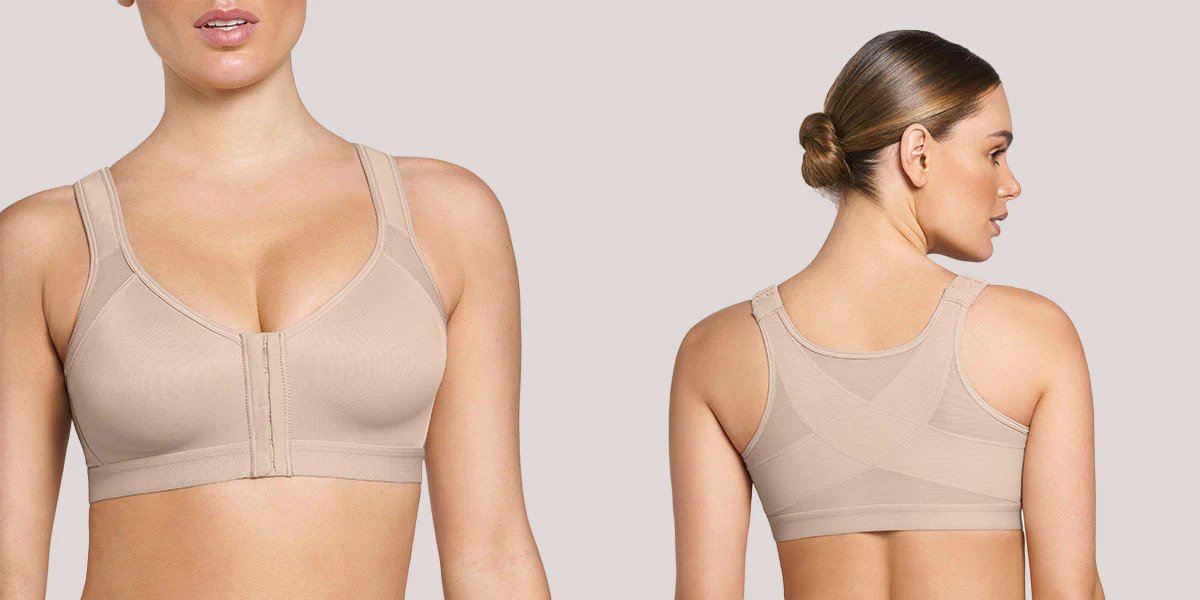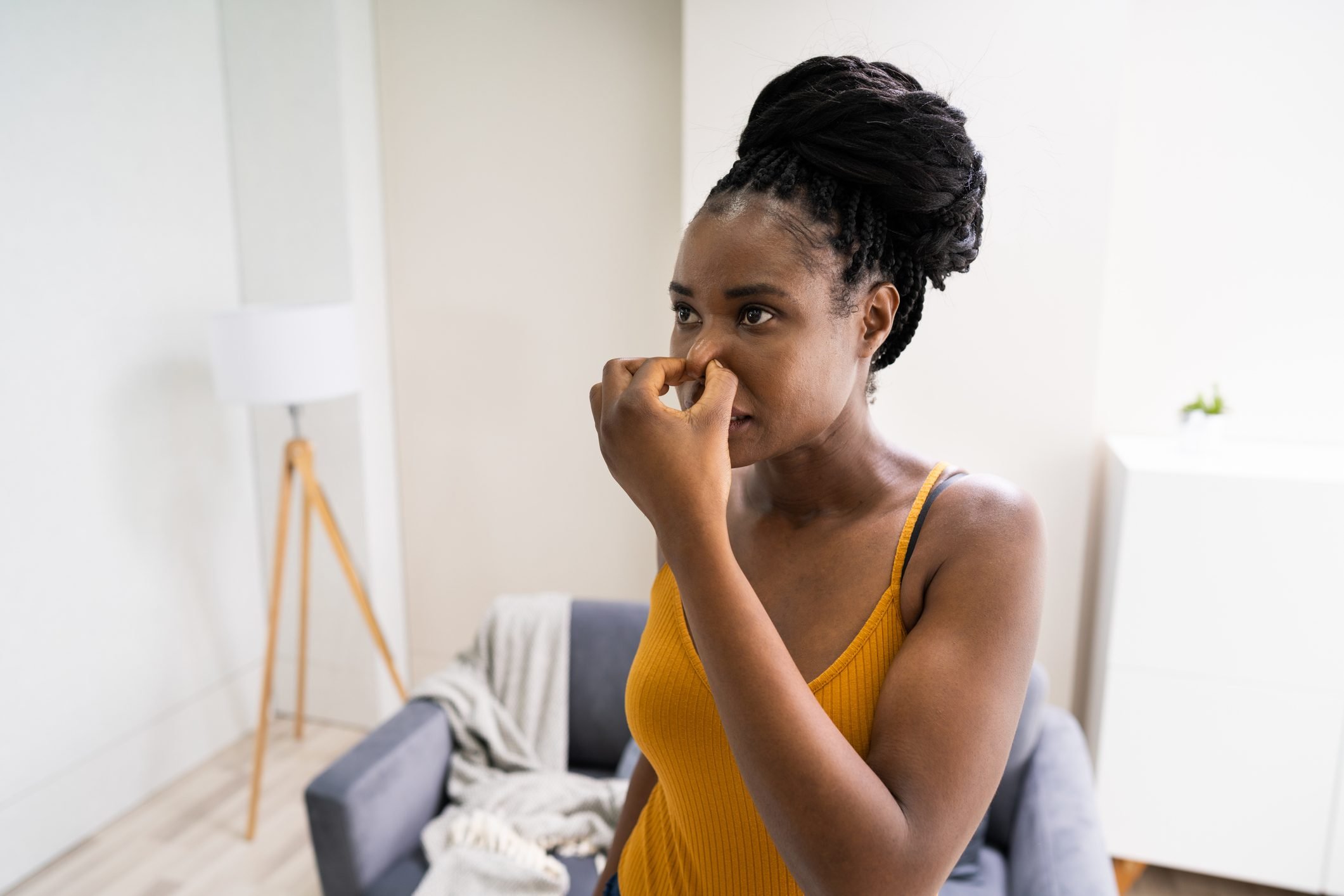Home>Women's Underwear>Bras>What Does A Surgical Bra Look Like


Bras
What Does A Surgical Bra Look Like
Modified: August 5, 2023
Discover what a surgical bra looks like and its importance in postoperative recovery. Find the perfect bras for your needs and comfort.
(Many of the links in this article redirect to a specific reviewed product. Your purchase of these products through affiliate links helps to generate commission for Under-tec.com, at no extra cost. Learn more)
Table of Contents
Introduction
Welcome to the world of surgical bras, a specialized undergarment designed to provide support and comfort after various types of breast surgeries. Whether you have undergone a mastectomy, breast augmentation, reduction, or reconstruction, a surgical bra is an essential part of your post-operative recovery. This article will delve into the purpose, design, and features of a surgical bra, outlining its materials, types, and proper usage.
After breast surgery, your body needs time to heal and adjust. During this crucial recovery period, a surgical bra plays a vital role in promoting healing, reducing swelling, and providing optimal support to the breasts. It is specifically designed to minimize discomfort and facilitate the healing process by offering gentle compression and stabilization.
So what does a surgical bra look like? Surgical bras generally resemble traditional bras but have unique features that cater to post-operative needs. They are typically crafted from soft, breathable, and hypoallergenic fabrics to ensure comfort while protecting sensitive surgical areas.
It is important to select a surgical bra that fits well and provides adequate support. A properly fitted surgical bra can help reduce pain and discomfort, prevent complications, and promote healing. Additionally, a well-fitting bra can enhance your overall posture and alleviate any strain that may occur during the recovery phase.
In the following sections, we will explore the various design and construction features of a surgical bra, the different types available, guidelines on how to wear one correctly, and essential care and maintenance tips. By the end, you’ll have a comprehensive understanding of surgical bras and their role in your recovery process.
Purpose of a Surgical Bra
The primary purpose of a surgical bra is to provide support and comfort to the breasts after various types of breast surgeries. It plays a crucial role in the post-operative recovery phase by promoting healing, reducing swelling, and minimizing discomfort.
One of the main benefits of a surgical bra is its ability to provide gentle compression and stabilization. This compression helps to reduce swelling and helps the breast tissue settle into its new position after surgery. By providing support, it also helps to alleviate pain and discomfort that may occur in the early days of recovery.
A surgical bra also helps to protect sensitive surgical areas from irritation and rubbing against clothing. The fabric used in surgical bras is typically soft, breathable, and hypoallergenic, ensuring comfort for the wearer while minimizing the risk of skin irritation or infection.
Additionally, a surgical bra helps to maintain the proper positioning of breast implants after breast augmentation surgery. It helps to keep the implants in place as they settle and prevent excessive movement that could compromise the surgical outcome.
Another important purpose of a surgical bra is to support the healing process. By offering gentle compression and support, it helps to improve blood circulation around the surgical area, which is crucial for the delivery of oxygen and nutrients necessary for tissue repair. It can also help to prevent the formation of scar tissue and promote optimal healing.
Furthermore, a well-fitted surgical bra can improve the overall posture of the wearer. It supports the weight of the breasts and helps distribute it evenly, reducing strain on the back and shoulders. This is especially beneficial for women who have undergone breast reduction or breast reconstruction surgeries, as these procedures can significantly alter the weight and shape of the breasts.
In summary, the purpose of a surgical bra is to provide support, comfort, and protection to the breasts during the post-operative phase. It aids in the healing process, reduces swelling, minimizes discomfort, and ensures optimal positioning of breast implants. Choosing the right surgical bra and wearing it correctly can greatly contribute to a smoother and more comfortable recovery.
Design and Features of a Surgical Bra
A surgical bra is specifically designed to cater to the unique needs of individuals recovering from breast surgeries. It combines functionality, comfort, and support to promote healing and ensure a comfortable recovery. Let’s explore the design and features of a surgical bra in more detail:
1. Material and Construction: Surgical bras are typically made from soft, breathable, and hypoallergenic materials to ensure maximum comfort. Common materials used include cotton, modal, microfiber, and spandex. The construction of a surgical bra often includes seamless or low-seam designs to minimize friction and irritation against sensitive surgical areas.
2. Front Closure: Most surgical bras feature a front closure, either with hook-and-eye or zipper mechanisms. This design feature allows for easy application and removal, without the need for raising the arms, which can be challenging and uncomfortable during the early stages of recovery.
3. Adjustable Straps: Surgical bras typically have adjustable straps to ensure a customized fit. This feature allows for individual comfort preferences and accommodates variations in body shape and size. The straps should be wide enough to distribute weight evenly and prevent shoulder strain.
4. Pocketed Cups: For individuals who have undergone a mastectomy or breast reconstruction, there are surgical bras with pocketed cups to accommodate breast prostheses or breast forms. These pockets ensure a secure and discreet fit for those who choose to wear external breast forms
5. Wireless and Soft Cups: Surgical bras are typically wire-free to minimize pressure and discomfort on the surgical area. They often have soft cups that provide gentle support without adding unnecessary compression. The cups may also have padding or removable inserts for additional comfort.
6. Breathable and Moisture-Wicking Fabrics: Surgical bras are designed to maintain proper airflow and moisture control to prevent excessive sweating and skin irritation. Moisture-wicking fabrics help to keep the skin dry and comfortable, reducing the risk of infections or rashes.
7. Compression: Surgical bras provide gentle compression to reduce swelling and promote proper healing. The level of compression may vary depending on the type of surgery and individual needs. It is crucial to choose a surgical bra that offers appropriate compression without being too tight or restrictive.
8. Supportive Bands: Many surgical bras feature wide and supportive bands under the bust to provide added stability and support. These bands help distribute the weight of the breasts evenly, relieving pressure on the shoulders and back.
Overall, the design and features of a surgical bra are carefully tailored to meet the specific requirements of post-operative recovery. The use of high-quality, breathable materials, adjustable straps, front closures, and various support features ensures maximum comfort, support, and optimal healing during the critical recovery period.
Material and Construction
The material and construction of a surgical bra play a crucial role in providing comfort, support, and proper healing during the post-operative phase. Let’s take a closer look at the key aspects of the material and construction of surgical bras:
1. Soft and Breathable Fabrics: Surgical bras are typically made from soft and breathable materials, such as cotton, modal, microfiber, or a blend of these. These fabrics ensure maximum comfort against the skin and minimize the risk of irritation or allergies during the healing process. Breathable fabrics allow air circulation, preventing excessive sweating and moisture buildup.
2. Hypoallergenic Properties: In order to minimize the risk of irritation or allergic reactions, surgical bras are often made from hypoallergenic materials. These materials are specially treated or selected to reduce the likelihood of any adverse reactions on sensitive skin.
3. Seamless or Low-Seam Construction: The construction of surgical bras often involves minimal seams or seamless designs. This helps to reduce friction and eliminate potential pressure points or areas of irritation against the surgical incisions. Low-seam construction ensures a smooth and comfortable fit, allowing the bra to be worn discreetly under clothing.
4. Moisture-Wicking Properties: Surgical bras may incorporate moisture-wicking properties in their materials. This feature helps to draw moisture away from the skin, keeping the surgical area dry and comfortable. Moisture-wicking fabrics also contribute to the prevention of infections or rashes, as they discourage the growth of bacteria or fungi.
5. Stretch and Recovery: Surgical bras often have a certain amount of stretch to allow for a comfortable and customized fit. The elasticity of the materials used ensures proper support and flexibility. It is important for the bra to have good recovery to maintain its shape and supportiveness over time, even after repeated wear and washing.
6. Quality Construction: Surgical bras are typically manufactured with attention to detail and quality construction. This includes reinforced stitching in areas of high stress, such as straps and closures, to ensure durability and long-lasting use. Quality construction enhances the overall functionality and lifespan of the surgical bra.
When selecting a surgical bra, it is essential to consider the material and construction aspects mentioned above. The choice of soft, breathable, hypoallergenic fabrics, along with seamless or low-seam construction, will contribute to a comfortable and irritation-free recovery experience. Additionally, choosing a surgical bra with moisture-wicking properties and good stretch and recovery will enhance comfort and support during the healing process.
Types of Surgical Bras
There are several types of surgical bras available to cater to different surgical procedures and individual needs. Let’s explore some of the common types:
- Compression Bras: Compression bras are designed to provide gentle compression to the breasts after surgeries such as breast augmentation, breast reduction, or breast lift. These bras help reduce swelling, promote blood circulation, and aid in proper healing. They often have a seamless or low-seam construction and may feature adjustable straps and a front closure for ease of wear.
- Recovery Bras: Recovery bras are specifically designed for individuals who have undergone mastectomy or breast reconstruction surgeries. These bras often have pocketed cups to accommodate breast prostheses or breast forms. They offer gentle support, protection, and comfort during the recovery process. Recovery bras may also have adjustable straps, a front closure, and a wire-free design for optimal comfort.
- Sports Bras: Sports bras can also be used as surgical bras for certain types of breast surgeries. Sports bras provide adequate support, stability, and compression during physical activities, making them suitable for post-operative use. However, it is essential to choose a sports bra with a front closure and without underwire to avoid unnecessary pressure on the surgical area.
- Posture Bras: Posture bras are designed to improve posture and provide support to the shoulders and back. These bras have wide, supportive straps and a back reinforcement to help distribute the weight of the breasts evenly. Posture bras can be beneficial for individuals recovering from breast surgeries, as they help alleviate strain on the shoulders and promote proper alignment.
- Front-Closure Bras: Front-closure bras have a convenient front clasp or zipper for easy application and removal. These bras are particularly useful for individuals with limited mobility or who experience discomfort when raising their arms. Front-closure bras come in various styles and designs, including compression bras, sports bras, and recovery bras.
- Wireless Bras: Surgical bras are typically wire-free to avoid unnecessary pressure and discomfort on the surgical area. Wireless bras provide gentle support and help maintain proper circulation. They are suitable for various types of breast surgeries and offer maximum comfort during the healing process.
It is essential to consult with your healthcare provider or surgical team to determine which type of surgical bra is suitable for your specific surgery and recovery needs. Their guidance will ensure that you select a surgical bra that offers the appropriate level of support, compression, and comfort for your individual situation.
How to Wear a Surgical Bra
Properly wearing a surgical bra is crucial for maximizing its benefits and ensuring a comfortable recovery. Here are some guidelines on how to wear a surgical bra correctly:
- Choose the Right Size: Start by selecting a surgical bra that fits you properly. It should be snug but not too tight or restrictive. Take accurate measurements before purchasing and refer to the sizing chart provided by the manufacturer.
- Follow the Instructions: Read and follow the specific instructions provided by your healthcare provider or the manufacturer of the surgical bra. They may have specific recommendations for your recovery needs or the type of surgery you had.
- Put it on Slowly: Put on the surgical bra slowly and carefully, especially if you have limited mobility or have had surgery on your upper body. Begin by sliding your arms through the straps and gently fastening the front closure.
- Adjust the Straps: Ensure that the straps are adjusted evenly and comfortably on your shoulders. They should provide adequate support without digging into your skin or causing discomfort. If necessary, make small adjustments until you achieve the desired fit.
- Check the Cup Placement: If your surgical bra has cups, ensure they are positioned correctly over your breasts. The cups should encapsulate your breasts fully and provide gentle support without squishing or flattening them. Adjust the cups as needed for a proper fit.
- Ensure Proper Compression: If your surgical bra is designed to provide compression, ensure that it is providing a gentle, even compression to the surgical area. It should fit snugly without causing discomfort or restricting your breathing. Avoid wearing a bra that is too tight, as it can impede proper circulation.
- Wear as Directed: Follow the recommended guidelines provided by your healthcare provider regarding how long to wear your surgical bra each day. It is typically advised to wear it continuously for the first few weeks and gradually decrease the wearing time as your recovery progresses.
- Take Care of the Bra: Proper care and maintenance of your surgical bra are essential for its longevity and functionality. Follow the manufacturer’s instructions for washing and drying to ensure it remains clean, fresh, and in good condition.
Remember to consult with your healthcare provider if you have any specific concerns or questions about wearing your surgical bra. They can provide personalized guidance based on your surgery, recovery progress, and individual needs.
Care and Maintenance of a Surgical Bra
Taking proper care of your surgical bra is important to extend its lifespan and ensure optimal hygiene. Here are some essential tips for caring for and maintaining your surgical bra:
- Follow Washing Instructions: Always follow the manufacturer’s instructions for washing your surgical bra. This typically involves hand washing with a gentle detergent or machine washing on a delicate cycle with cold water. Avoid using harsh chemicals or bleach that can damage the fabric or affect its hypoallergenic properties.
- Avoid Excessive Heat: Avoid using high heat settings when drying your surgical bra, as it can cause shrinkage or damage the fabric. Instead, air drying is recommended. If you must use a dryer, choose a low heat setting or place the bra in a lingerie bag to protect it.
- Store Properly: When not in use, store your surgical bra in a clean and dry place. Avoid folding or compressing it in a way that could damage the construction or alter its shape. If you have a bra with cup inserts, store them separately to maintain their shape.
- Replace When Necessary: Over time, the elasticity and supportiveness of the surgical bra may diminish. If you notice that the bra no longer provides the necessary support or if the fabric starts to show signs of wear, it may be time to replace it. Regularly inspect your surgical bra to ensure it is still in good condition.
- Wear a Backup: It can be beneficial to have a spare surgical bra on hand, especially during the initial recovery period when you may be wearing the bra continuously. Having a backup allows you to alternate between bras while one is being washed or drying.
- Practice Good Hygiene: Keep your surgical bra clean and fresh by practicing good personal hygiene. Ensure that your surgical incisions are clean and properly cared for, and avoid wearing the bra with open wounds or infections. If you have any concerns about hygiene, consult with your healthcare provider.
- Consult with your healthcare provider: If you have any concerns or questions regarding the care and maintenance of your surgical bra, don’t hesitate to reach out to your healthcare provider or surgical team. They can provide specific recommendations based on your surgery type, recovery progress, and individual needs.
Remember that proper care and maintenance of your surgical bra not only enhance its durability but also contribute to your overall comfort and hygiene during the recovery period. By following these tips, you can ensure that your surgical bra remains in good condition and provides the necessary support throughout your healing journey.
Conclusion
A surgical bra is a vital component of your post-operative recovery after various types of breast surgeries. It offers support, comfort, and protection during the healing process, ultimately promoting optimal outcomes.
We have explored the purpose, design, and features of a surgical bra, highlighting the importance of materials and construction that prioritize comfort, breathability, and hypoallergenic properties. We also discussed the different types of surgical bras available, such as compression bras, recovery bras, sports bras, posture bras, front-closure bras, and wireless bras, each catering to specific surgical procedures and individual needs.
Understanding how to wear a surgical bra correctly is crucial for reaping its benefits. By following guidelines on choosing the right size, adjusting straps properly, and ensuring proper compression and cup placement, you can experience optimal support and comfort during your recovery.
Caring for and maintaining your surgical bra is also essential to prolong its lifespan and maintain optimal hygiene. By following washing instructions, avoiding excessive heat and proper storage, you can enjoy the durability and functionality of your surgical bra for an extended period.
Remember to consult with your healthcare provider for personalized recommendations specific to your surgery and recovery progress. Their guidance will ensure that you choose the appropriate surgical bra and follow the necessary care and usage guidelines.
In conclusion, a surgical bra is more than just a garment. It is an essential tool for your post-operative recovery journey, providing support, comfort, and protection during the healing process. By selecting the right surgical bra, wearing it correctly, and maintaining it properly, you can optimize your recovery and experience a smoother and more comfortable transition back to a normal and healthy lifestyle.










